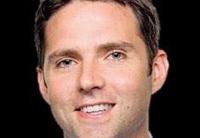DETROIT -- General Motors’ decision to pull Chevrolet out of most European markets is a major setback to the automaker's goal of transforming Chevrolet into a globe-spanning powerhouse.
But the move also lets GM leave a costly, near decade-long strategy of force-feeding Chevrolets into a market that had shown little appetite for the quintessential American marque. And it ends a muddled overlap with GM’s Opel and Vauxhall brands, which outsell Chevrolet in Europe by a 6-to-1 margin.
In the end, GM’s decision in 2005 to launch Chevrolet in Europe could be seen as a contingency plan in the event of Opel’s sale or demise. With Opel now showing a faint pulse, today’s news seems to validate what GM executives have been saying for nearly two years: They plan to stick with Opel for the long haul.
“This lets them focus more on Opel and Vauxhall, while abandoning a brand strategy with Chevrolet that I don’t think many people bought into,” said Morningstar analyst David Whiston.
By sometime in 2016, Chevrolet “will no longer have a mainstream presence in Western and Eastern Europe, largely due to a challenging business model and the difficult economic situation in Europe,” GM said in a statement.
Only iconic Chevrolet models, such as the Corvette, will continue to be sold throughout most of Europe. Chevrolet will continue selling a broad lineup in Russia and other countries that make up the Commonwealth of Independent States, including Ukraine, Kazakhstan and Uzbekistan.
Cadillac expanding
Cadillac, which has almost no presence in Europe, is “finalizing plans” for expanding its distribution network there over the next three years in advance of “numerous product introductions,” GM said.
The move “will benefit from a stronger Opel and Vauxhall and further emphasis on Cadillac,” GM CEO Dan Akerson said in a statement. It allows Chevrolet to focus “where the opportunity for growth is greatest.”
Akerson telegraphed a major shakeup to GM’s European brand strategy with comments critical of the Opel-Chevrolet overlap during an interview with Automotive News, a sister publication of Automotive News Europe, last month. “I just think there’s channel conflict and confusion,” he said. “I don’t think you can have an Astra … and a Cruze sitting in the same showroom.”
About half of Chevrolet’s 1,900 dealerships in Europe also sell Opel. GM said it will continue to provide warranty, parts and service for the U.S. brand.
Overlapping brands
Akerson also made clear his disdain for the decision by his predecessors in 2005 to roll out Chevrolet largely through rebadged vehicles developed and built by Daewoo, the Korean automaker that GM acquired in 2002.
“We sent in a bunch of young M.B.A.s and said ‘We can make Daewoo a much stronger product. We’re going to name it Chevrolet,’” Akerson said during the interview. “There was no brand discipline. We were going to commit the same sin that we did here” in the United States, with overlapping brands.
Chevrolet’s lineup in recent years has evolved into a mix of vehicles built on platforms developed both by Opel and GM Korea, with styling and vehicle attributes that more closely match models sold in the United States and other markets.
Still, Chevrolet’s improved European lineup didn’t fix the overlap problem -- and might have exacerbated it.
Take the Chevrolet Trax small crossover, which was launched this year on the heels of the successful rollout of the Opel Mokka. Even GM insiders wondered aloud why the company would launch essentially identical vehicles under separate brands that both share mainstream market status.
“Chevrolet had a lot of budget product,” Opel’s new boss Karl-Thomas Neumann told reporters on the sidelines of the Frankfurt auto show in September. “Chevrolet now has some product which is, in my opinion, too close with the Opel product.”
Years of insistence
Neumann’s frank assessment followed years of insistence by GM executives that Opel could be repositioned as a more premium brand, leaving room for Chevrolet as the value play.
By yanking the U.S. brand out of Europe, GM is abandoning an opportunity to increase market share and to wring more models from its vehicle platforms, says Warren Browne, a Detroit-area automotive consultant and former GM executive who ran the company’s Russian operations in the mid-2000s.
Browne said GM already put in the hard work to share vehicle architectures between the two brands, such as the Chevrolet Captiva and Opel Antara crossovers. He believes GM erred by not building Chevrolets alongside Opels in Europe rather than importing most of them from Korea.
That, Browne said, would have allowed GM to craft a more cohesive strategy for both brands.
“Chevrolet bowing out of Europe will energize Skoda and other mainstream brands,” Browne said.
The decision to reverse course is a reflection of Akerson’s management style. He has advocated for admitting strategic missteps and cutting losses, rather than doubling down on grand visions.
Asked last month about the traits he would like to see in his successor for GM’s top post, Akerson talked about the ability to take chances -- and admit failure.
“Have the humility and audacity to say ‘I made a mistake,’” he said, “and back up and go down the other way.”










